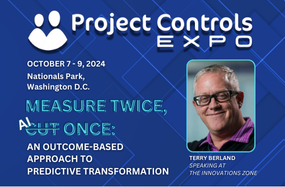
6 Project Management Questions to Ask To Ensure Success

A major reason behind the failure of most projects is often the lack of understanding by the project team members of what the project management requires and what results project leaders are expecting from the delivery of the solution. All IT, manufacturing, and construction projects are best served when providing to their teams, a clear scope and critical success criteria for completion, prior to developing or constructing their solution. For example, the purpose to build a new bridge is obvious, but does your team understand what a successfully completed bridge project looks like? How will you measure that? Is it simply to have a standing edifice in the end or are their additional specifically targeted goals such as timelines, budgets, new technologies, political influences or cultural considerations?
Different companies will have different ways of managing their projects, but at the core, there are basic project questions that companies need to ask themselves before starting on their project to ensure project completion and delivery are successful.
1. Who are Your Stakeholders and What Does Success Mean to Them?
The goal of service providers is to support their clients and to successfully undertake projects to help the client in some specific way. The primary stakeholder of the project is the client, and service providers need their approval at all major stages. Depending on the skill and role of the chief stakeholder, a project can be simply monitored by that individual or it could be managed closely.
Understanding what data the stakeholder monitors and values and what a successful project looks like to them is important as it can determine the success or failure of the project.
2. What is the Necessity of the Project?
There could be a number of reasons why a project is being planned and executed. It can range from being a necessity to stay competitive in the marketplace to being an add-on task due to the current availability of resources. Not all ideas are worthy of being acted upon and each one should be looked at both independently and in comparison to a portfolio of other potential project investments. Questions that might be asked include: Does the project fit in your current suite of products or services? Is the organization prepared to diversify and take on additional risks to compete in a new sector of the marketplace? Do we have the skills in place to deliver a solution or will the cost to develop or hire that talent be too high? There is any number of questions that could and should be asked when taking on even the smallest of projects as it will divert resources towards a new goal – any of which an organization should be prepared to manage and sustain into the future.
3. What is the Project Scope?
The scope of a project basically implies the list of goals, costs, tasks, deliverables, and deadlines associated with a project. When all these goals are met, then it can be said that “Yes, the project is successful”. There are mainly two types of scope – high-level scope, which is part of the project charter, and low-level scope, which is defined in the document listing the business requirements. The completion of all deliverables in a timely manner will support successful project delivery.
4. What Will Require a Change in Scope?
Change is inevitable. Just like everything else in business, a project too will undergo some changes in its life. Successful organizations manage change whereas unsuccessful organizations can be brought down by the inability to address even a small change in scope. One of the key components of successful project management is an organization’s ability to formally identify, react to and manage change using a formal change management process. There is no doubt that the application of a change process will have an eventual impact on the product or service regardless of the industry. Change management does not necessarily have to be complex to be useful but it needs to be adaptable enough to address the impact on quality, cost, and schedule for all involved. Coming to an agreement at the inception of a project as to how changes to scope will be managed will no doubt be a major criterion for project success.
5. What are Your Organization’s Communication Preferences?
Depending on the size of a company, the communication between the different members, supervisors and stakeholders can vary. It could be a flat structure where all members answer to one project leader or it could be a matrix setup that provides for two or more functional and divisional lines of project responsibility. A third option might include a structure where the bulk of the work is performed by subcontractors. Each of these structures has its own pros and cons. Depending on the nature of the project it is wise to adjust accordingly. Holding regular status meetings and using processes and applications that make needed information available to the appropriate participants is key to delivering a successful project that meets the needs of all involved.
6. What about Risks?
Any project has to contend with having some level of risk. Attempting to identify risk before commencing the actual project as much as possible is very important. Equally important is having a process for identifying and managing in-flight project risks. Risks can stem from anywhere: poorly defined product or design requirements, inaccurate cost or schedule estimation, lack of technical experience, market conditions, etc. By using a risk management process with key components of identification, assessing, mitigating, monitoring, and informing about risk, you improve your opportunity to reduce risk impact and improve the quality and performance of the project.
Conclusion
Once all these questions are addressed, you and your team are ready to handle any project that has been assigned to you.
Just remember, once you are ready to begin, you are not alone. If your IT department does not have limitless time and resources, a project management solution like LoadSpring Cloud Platform’s cloud portal can be quite powerful. It will free you from the heavy lifting of Cloud-based PM software, data management, reporting, training, and more. In the end, the goal is to boost productivity and get a higher return on your investment of time and resources.








